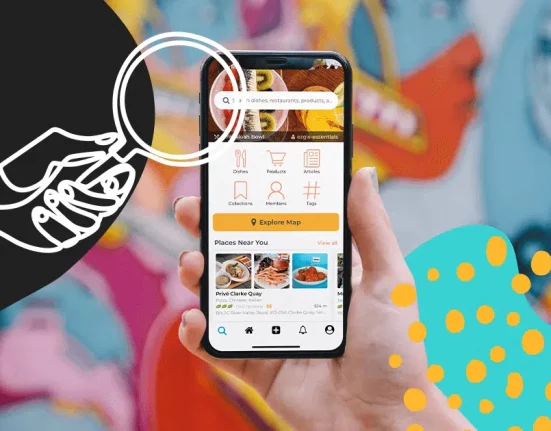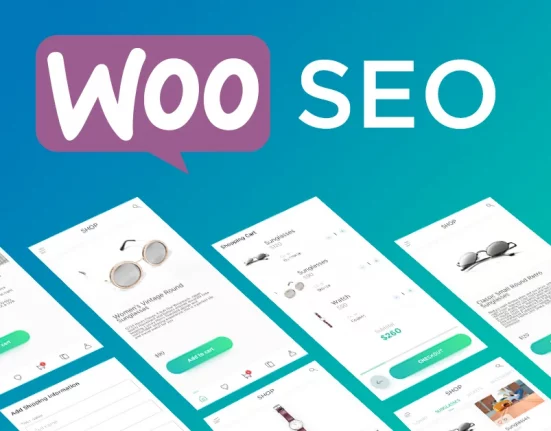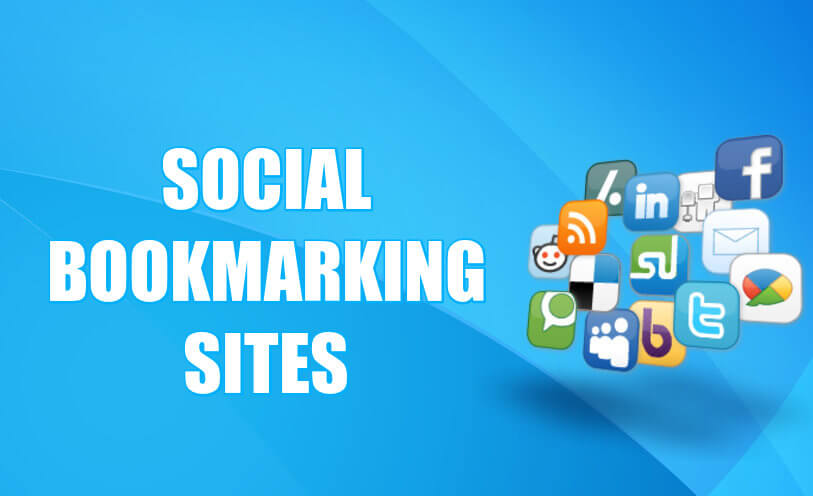A Beginners Guide to Link Building Services
Link building, in simple words, is a procedure of getting other websites online to link to your website. All the business owners and marketers are interested in building links to increase referral traffic and domain authority, which search engines consider to improve your web visibility.
Table of Contents
ToggleGoogle’s algorithms are ever evolving and complicated but the links you create remain an essential factor to determine the site rank for keywords. Link building is one of the most important tactics of SEO because the links signal search engines that your website has valuable resources worthy of citation. Thus, websites with more backlinks, rank higher.
Remember one thing, all this is possible only when you do it the right way. Link building the wrong way will get your website penalized and flagged by Google.
Why is it still so Important?
No matter what you have heard but link building is still alive. It is a significant determinant of Google for ranking web pages. Google notes:
“In general, webmasters can improve the rank of the websites by increasing the backlinks to their pages from high-quality websites.”
Let’s understand its importance with the help of an example. For instance, if you own a website selling AC brackets ‘Good Guys AC brackets’ and there is another competitor ‘ Black Hat AC brackets’ selling the same product. One of the factors that Google considers to determine the rank is link popularity.
Three external websites – Website A, Website B, and Website C are linking back to ‘Good Guys AC brackets’. On the other hand, 2 external websites – Website X and Website Y link to the ‘Black Hat AC brackets’.
Apart from the number of links pointing to the website, there are other factors that Google considers for page rank like authority and relevance of the linking page, anchor text of incoming links and content optimization of your website.
So, if we assume the links pointing towards the ‘Good Guys AC brackets’ fulfills all the criteria, then they have a better chance of ranking for keyword ‘AC brackets’.
Types of Links
Google is penalizing sites that build low-quality links and thus, quality is of utmost importance. In the past, many SEO companies suggested article submission and directory listings because when done correctly, it was of no risk to the website. After the Penguin update, Google aggressively penalizes sites that build low-quality links. Let’s move to the types of links that you should and shouldn’t build to stay in the good books of Google.
Natural Links
This is the holy grail link for SEO. With these editorial links, you do not even have to ask because the website owner editorially gives them. However, a fairly good reason is required for someone to give you a link without you asking for it.
For instance, the ‘good reason’ can be a brilliant article that you have created with some influencers and through the process, more influencers become aware of it naturally. Building natural links require a lot of patience and yes, this is why these types of links are highly valued.
Manual Outreach Links
It is one of the most common types of link building you’ll notice most website owners go for, specifically if you are just starting out. The process involves, you manually contacting the website and asking them to link to your website, of course giving them a good reason why they should. Ensure to contact those who are relevant to your industry otherwise, this won’t work out.
Self Created Links
These are the types of links you shouldn’t consider because they all fall under black hat SEO, which fools the search engine into considering that the content is relevant when it is actually not. After the Penguin update, Google has started finding out these links and penalizing.
These links are not of much value and no doubt they were useful to certain websites in the past, we recommend you to be very cautious before using. A few examples of these links are
- Article directories
- Non moderated blog comments
- Advertorials
- Forum Signature
- Guestbooks
- User profile page
Link Building Strategies
There are many ways to get links but it often depends on the resources at your disposal and the niche you are in. For some niche’s it is not very tough to get valuable, high-quality links while for some, it requires more efforts.
With that in mind, let’s delve into the section giving out some link building strategies that can help you make it to the top, when done right
Content-Based
As you know, content is the king and all you need to do is create an asset which will get you links naturally. Below mentioned are the different content based ideas that you can incorporate in your link building strategy.
- Video
- How-to Guide
- Infographic
- Data Visualization
- Image Gallery
You create these content assets to earn links to them from all those websites that find it relevant, informative, funny, etc. You can reach out to websites and let them know about the asset you created. Over time, you wouldn’t have to ask people for the links but will get it naturally.
What you can do is seed the asset with some bloggers in the community to spread the word. No doubt, this takes some time as well as an investment but it is definitely possible.
Guest Blogging
It is a process of asking other websites if they would like to publish a piece of content you write for their blog. This is often one of the best ways to earn a high-quality link with relevant content.
Google has cracked that there are website owners that use this strategy for publishing low-quality content. Thus, you need to careful while building links through this strategy because there is low-quality content flowing a lot. Google is aware and have become very good at finding those and yes of course, penalizing it.
Broken Link Building
Broken links are all over the Internet and often exist on high-quality pages. This is a very popular strategy that works for many by helping the website owner fix their broken links by offering them a valuable option to link.
Let’s have a look at the common approach, though it varies from niche to niche, website to website:
- Look for broken links
- Find good targets
- Create content
- Outreach
Let’s understand this better with an example. You have a gluten testing company and want to create links for your pages. While you are doing research, you find out that a university in your area has resource pages but are broken. You can politely point it out to the owner and suggest them to use your updated resource. If accepted, the owner then links to your page.
You can repeat this process over and over again. In some cases, use your existing content as a suggestion and sometimes create new.
Links from Family and Friends
Ask your family and friends to link to your website. While approaching them, do not forget that relevance matters the most. Remember that links from niche industry matter more than random sites.
Social Media Promotions
Who doesn’t use social media? Everyone wants to have something new to loom through every time they are on the app. Use the existing content or create new and share on your social media profile. Ask your loved ones to share the post and if it’s what people love, it will go viral in no time.
Ego Bait
This is a piece of content that is created considering to get a link based on the egos of the people featured in it. The creators hope the featured people will feel better seeing themselves in a blog post and will be more inclined to share it with a link.
This is the process of ego bait that you can follow to gain multiple links with one content:
1. Ideas and Targets
Firstly, you need to come up with an idea which goes well with your niche. For instance, if you have an organic fruit farm, you can create ego bait content like
- Top ten vegan bloggers to follow
- Five vegan recipes under 15 minutes
2. Content
This is the simplest step to undertake with keeping a few things in mind. Try to include as much information as possible about the person you write about in your content. Do not forget that you are trying to get the attention of the bloggers because you want them to share and link it. Make sure to include:
- A link to their website and social media profiles
- Picture of the blogger
- Screenshot of their website
- Reasons why they are included in the list and what makes them unique
3. Outreach
After the post is published your next and the most important step is to send an e-mail to the bloggers and website owners whom you have featured in the post. Make sure you send a simple email. No doubt you can add the details but we assume that the people you are sending to are busy and would not have that much time to read a long e-mail.
Images
Informative images have always been an important part of link building and so it is even in 2019. You can either get an image link naturally or by outreach.
Image link building is when you are looking for instances to link the images based on your website or brand.
Infographics are the most common types of images that get links. Images especially infographics are used by other websites also, some credit the creator while some miss. With reverse image search, you can find all those websites who have missed linking to your website and request them for a link you deserve.
This video will help you learn more about image link building.
White Hat SEO vs Black Hat SEO
As you may know, there are two types of SEO, white hat and Black hat. White hat refers to ethical Search Engine Optimization process using authentic methods of promotion like:
- Link building
- Keyword research analysis
- Title and meta tags
- Anchor text optimization
- Search engine submission
Black hat SEO is known as spam indexing. This is something Google hates and penalizes websites when found. The techniques include:
- Excessive usage of keywords
- Plagiarized content
- Excessive blog comments
- Excessive meta keyword usage
- Spamming
- Hidden text
Link Building Metrics
You need to be aware of the multiple metrics that are associated with links. Not all links built are the same. These metrics will help you know the value of the link, helping you examine if it is worth going forward with it. These metrics will help you analyze the link profile of your own site or competitors.
Domain Authority
It is the cumulative value of your entire website. Here, we look at the entire website to know how strong it is rather than looking at individual pages.
Depending on the links pointing to your website, the PageRank is calculated by Google. It ranges from 0-10, 10 is the highest score. This metric is used to understand how strong the website is. Although the PageRank is only of a single page, still it is a reliable metric to determine the strength of the site because most will be to the homepage and the PageRank flows from the home page to other pages of the site.
When it comes to link building, the website strength is a valuable metric to use. The strength you get from the websites depends on how strong they are, which then signals to Google that you are a good site and worth ranking.
Tools you can use to measure Domain Authority
- PageRank for chrome
- Mozbar
Page Authority
There will be times when you will have a link from an existing page rather than creating a new one on the website. For instance, it could be something like your business is being added to the top ten restaurants in California.
Before you start, you need to know the strength of the page to know if it is worth putting in a lot of effort. The higher the Page Authority of the page, the more benefits to your SEO efforts.
Tools you can use to measure Page Authority
- PageRank for chrome
- Mozbar
Number of Links
You would, of course, want to track how many links you have built and how your website fares compared to your competitors.
Remember that you need to consider the quality of the links as well because not all links built will be the same, along with the number.
The number of links metric is useful in the following ways:
- Measuring the success of link building project
- To run comparisons between yours and competitors
The above-mentioned factors require you to consider the quality of links to get a clear picture.
Page Relevance
There have been arguments whether Google considers relevance as a strong factor in determining the link value. What we know is yes, it does because it is natural for relevant websites to link each other. However, if you get a link from CNBC homepage to your website about dairy, will you reject it only because CNBC has nothing to do with dairy?
We do not go in detail about the debate people have about the relevancy. You, of course, want targeted traffic to your site to convert visitors to customers. This is why it is wise to link to websites where you think your potential customers will visit.
Position of Links On the Page
For instance, if you live you California and you have a blog on Thai cuisine. You are going to share the link with the website of your local Thai restaurant. Do you know the best area to place the link? This is something that most people do not think about because what matters to them is getting a link but the position plays an important role in conversion.
If you want the readers to come across your link, you need to position it in an obvious place, maybe in the main body or at the top. You can even position the links at the place where the content explains how brilliant the restaurant is.
Ensure not to put the links in the footer because most readers may not scroll that far and also don’t expect to find useful links down there. Also, Google does not give too much value to the link positioned at the bottom, thinking that it is not very useful for the users. It also considers the position of the links to value the page.
If more than 50% of the links pointing to your website are from the footer, then it may consider those as low-quality and start scrutinizing.
Frequently Asked Questions
1. How many types of linking building are there in SEO?
As per Google, there are three types of backlinks with utmost importance – inbound links which are incoming links from other sites, outbound links which are the inks from your website to other high authority sites and internal links that help visitors find relevant content on your website.
2. How to run a link building strategy?
The strategy involves 6 steps which are:
- Know your audience
- List out sites that appeal to your audience
- Write high-quality content
- Find relevant sites
- Reach out to other site owners
- Use social media to boost content
3. Is backlink important for SEO?
Yes, backlinks are a crucial element for organic search ranks. As per Brain Dean, one of the most crucial ranking factor for Google is the number of referring domains. The more referencing domains, the higher the Google ranking.
An expert SEO link building company can help you deter from the negative impacts of link building on your site. We hope to have helped you brief about the SEO link building services.





